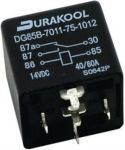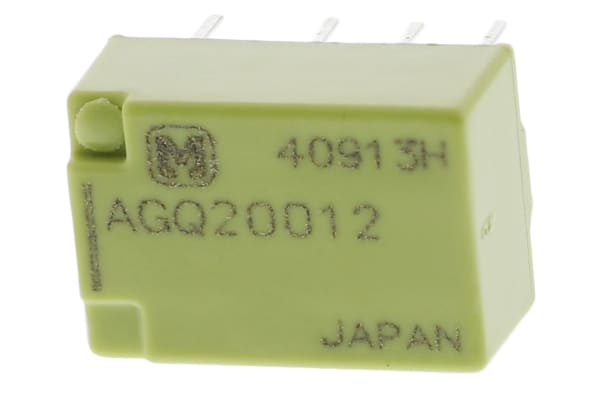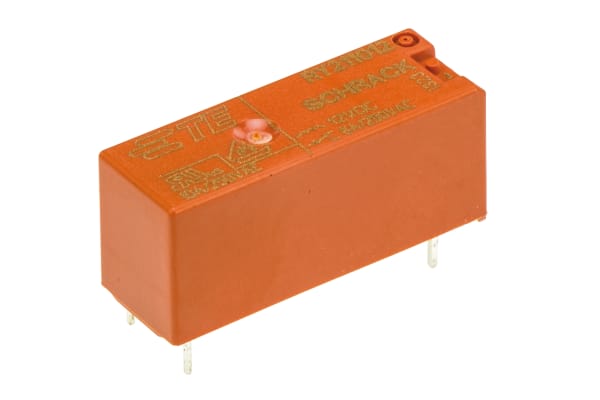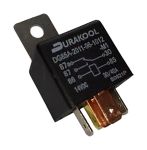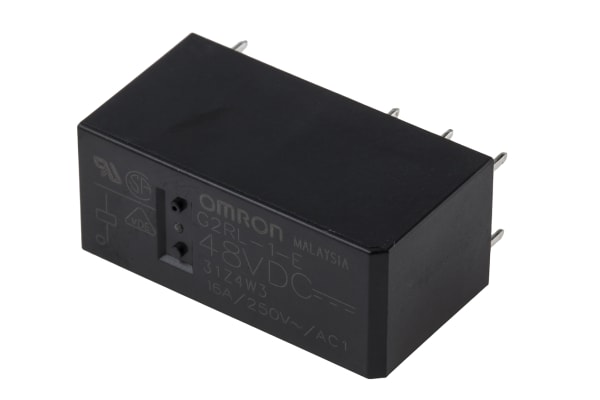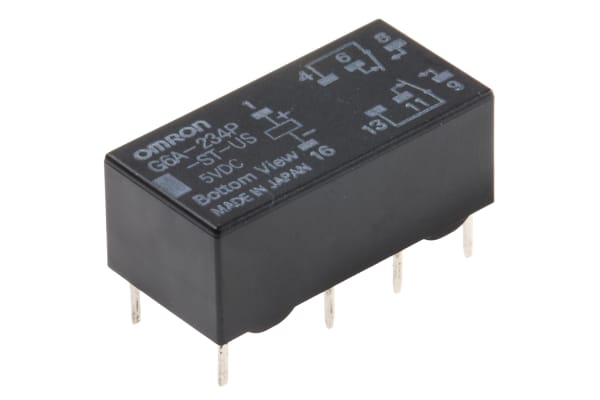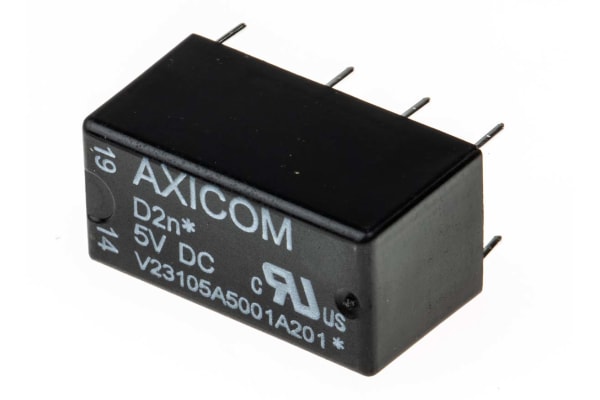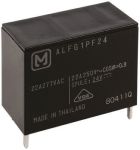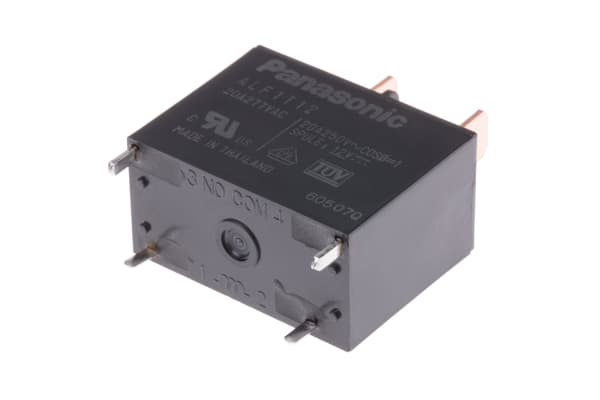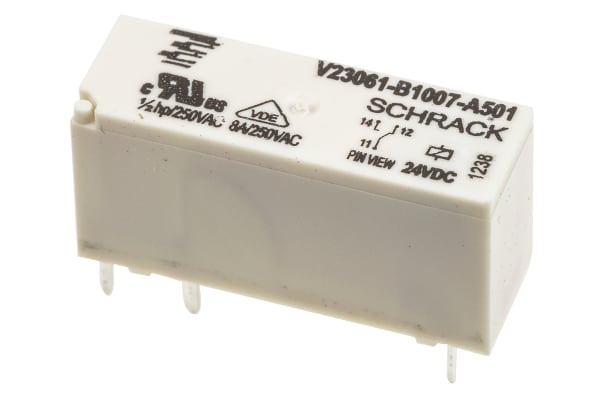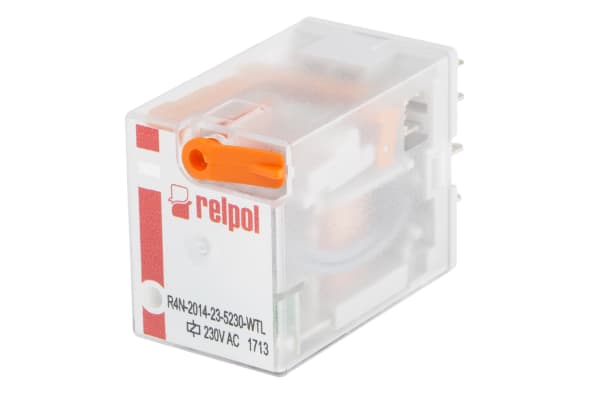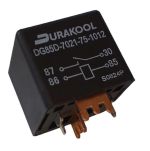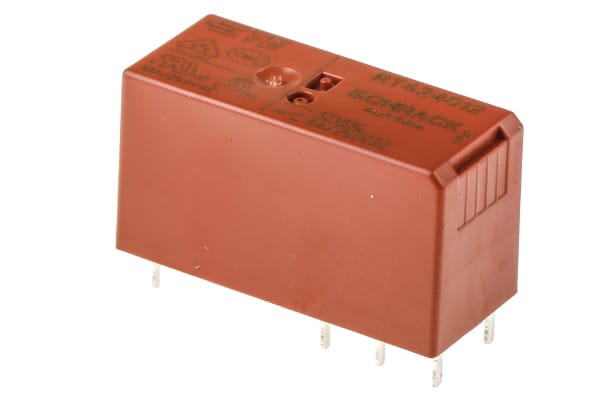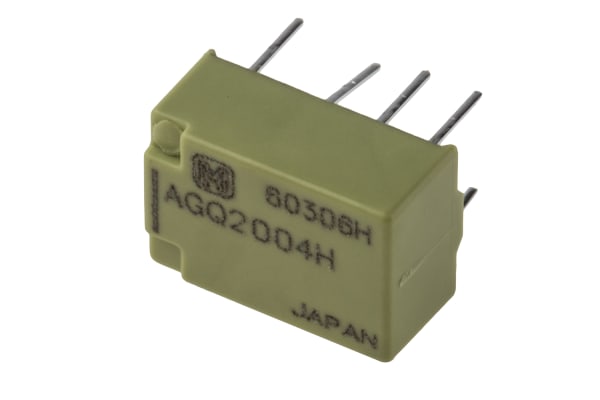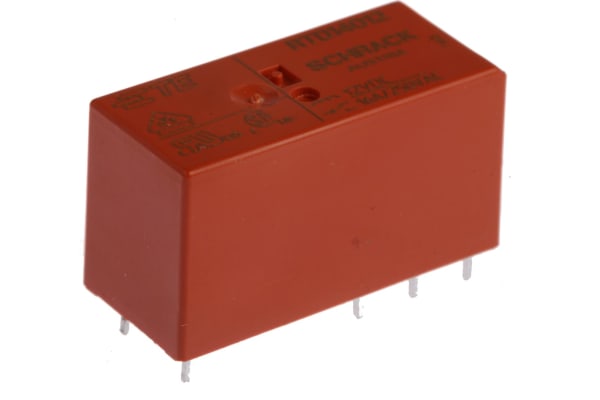Non-Latching Relays
Relays are electrical switches that are operated by electrical impulses with the primary function to open and close a circuit, they can also be referred to as industrial switches. There are 2 main types available, latching and non–latching relays.How do non-latching relays work?Non-latching relays are in a normally closed (NC) position and will stay in this state without power. When power passes through the circuit, the relay switched to a normally open (NO) position by using an internal coil to generate a magnetic force, holding this NO position. Once the current is turned off, it returns to the NC position. This makes non-latching relays well suited to push-button applications like keyboards and micro-controller input buttons.What are non-latching relays used for?Non-latching relays are highly durable and versatile components, making their performance long lasting and suitable for use in a wide range of applications, such as:Automotive enginesHousehold appliancesIndustrial machineryMedical equipmentTelecommunications equipmentWhat is the difference between latching and non-latching relays?Both types of relays in similar in design and function, however, a significant difference between them is that a latching relay will remain in the last position it when it was last powered, whereas a non-latching goes back to its normal position. This makes each more type of relay suitable for different applications. Considerations when selecting a relayWhen choosing a relay, it is important to consider a number of specifications to ensure it is fit for purpose, some factors include:Coil voltage – the required voltage to actuate the switching mechanism. If a voltage is too high this could damage the components, if it is too low then it will not actuate. Contact configuration – This is the state the contacts are in without power. For example SPST, single pole single throw.Contact material – the relay contacts are available in many materials that have certain properties. Common materials are gold, silver, tin oxide and nickel Coil power – the amount of power (watts) the coil operates at. This must match the power in the circuit for correct function. Coil resistance – the amount of resistance (ohms) in the circuit that the coil creates.
-
Durakool, 12V dc Coil Non-Latching Relay SPDT, 60A Switching CurrentPCB Mount Single Pole, DG85B-7011-75-1012
IDR53,074.34 -
Panasonic DPDT Non-Latching Relay PCB Mount, 12V dc Coil
IDR38,284.85 -
TE Connectivity, 12V dc Coil Non-Latching Relay SPDT, 8A Switching Current PCB Mount Single Pole, RY211012
IDR58,004.17 -
Panasonic, 3V dc Coil Non-Latching Relay DPDT, 1A Switching Current PCB Mount, 2 Pole, AGN200A03
IDR55,172.14 -
Durakool, 12V dc Coil Non-Latching Relay SPDT Plug In Single Pole, DG85C-7011-76-1012-DR
IDR68,493.17 -
Omron, 48V dc Coil Non-Latching Relay SPDT, 16A Switching Current PCB Mount Single Pole, G2RL-1-E 48DC
IDR60,521.53 -
TE Connectivity, 5V dc Coil Non-Latching Relay DPDT, 1A Switching Current PCB Mount, 2 Pole, V23105A5301A201
IDR55,801.48 -
-38.80%
Omron, 5V dc Coil Non-Latching Relay DPDT, 2A Switching Current PCB Mount, 2 Pole, G6A-234P-ST-US 5DC
IDR67,339.38IDR55,906.37 -
Omron, 12V dc Coil Non-Latching Relay SPNO, 20A Switching Current Plug In Single Pole, G4A-1A-E DC12
IDR96,079.24 -
TE Connectivity, 5V dc Coil Non-Latching Relay DPDT, 3A Switching Current PCB Mount, 2 Pole, V23105A5001A201
IDR51,500.99 -
Panasonic, 12V dc Coil Non-Latching Relay SPNO, 22A Switching Current PCB Mount Single Pole, ALFG1PF12
IDR57,584.61 -
Omron, 24V dc Coil Non-Latching Relay DPDT, 8A Switching Current PCB Mount, 2 Pole, G2RL-2 24DC
IDR60,101.97 -
TE Connectivity, 12V dc Coil Non-Latching Relay SPDT, 16A Switching Current PCB Mount Single Pole, RTH14012
IDR61,885.10 -
Durakool, 12V dc Coil Non-Latching Relay SPDT, 40A Switching Current Plug In Single Pole, DG85A-7011-36-1012
IDR56,955.27 -
Panasonic, 12V dc Coil Non-Latching Relay SPNO, 100mA Switching Current PCB Mount Single Pole, ALF1T12
IDR57,165.05 -
Omron, 12V dc Coil Non-Latching Relay DPDT, 2A Switching Current PCB Mount, 2 Pole, G5V-2 12DC
IDR37,026.17 -
TE Connectivity, 24V dc Coil Non-Latching Relay SPDT, 8A Switching Current PCB Mount Single Pole, V23061B1007A501
IDR62,934.00 -
Fujitsu, 5V dc Coil Non-Latching Relay DPDT, 1A Switching Current PCB Mount, 2 Pole, RY-5W-K
IDR40,382.65 -
Relpol, 230V ac Coil Non-Latching Relay 4PDT, 6A Switching Current Plug In, 4 Pole, R4N-2014-23-5230-WTL
IDR109,400.27 -
TE Connectivity, 24V dc Coil Non-Latching Relay SPNO, 16A Switching Current PCB Mount Single Pole, RT334024
IDR63,458.45 -
Durakool, 12V dc Coil Non-Latching Relay SPNO PCB Mount Single Pole, DG85D-7021-75-1012
IDR58,109.06 -
TE Connectivity, 12V dc Coil Non-Latching Relay DPDT, 8A Switching Current PCB Mount, 2 Pole, RT424012 6-1393243-3
IDR67,129.60 -
Panasonic DPDT Non-Latching Relay PCB Mount, 4.5V dc Coil
IDR38,284.85 -
TE Connectivity, 12V dc Coil Non-Latching Relay SPDT, 16A Switching Current PCB Mount Single Pole, RTD14012
IDR50,661.87



